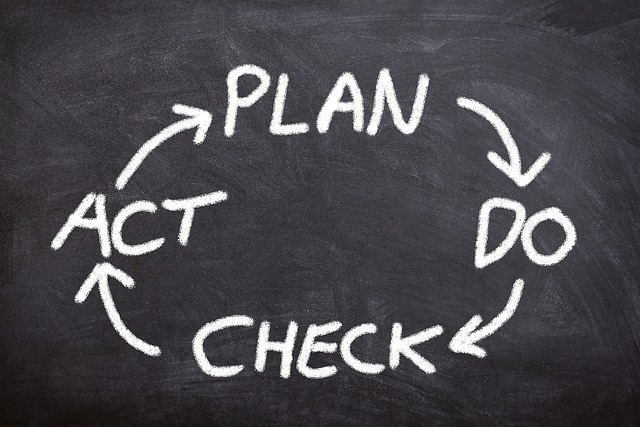Understanding Continuous Improvement
Continuous improvement embodies the philosophy of constantly enhancing services, processes, and personal capabilities. It applies to every facet of life, whether in your professional career or personal endeavors. The key lies in recognizing that improvement does not happen in a vacuum; it requires intentionality and a commitment to growth. The principle behind continuous improvement is rooted in the understanding that there’s always room for progression. This concept challenges the static nature of achievement. Instead, it encourages us to embrace a learning mindset. This learning encompasses failures and successes, steering individuals toward lasting achievement and fulfillment.
Adopting a mindset geared toward continuous improvement begins with self-awareness. Self-awareness allows you to identify areas in your life or career that require attention. Without recognizing these areas, you can’t strategize effectively for growth. Implementing regular self-reflection becomes vital. Try journaling regularly, where you can articulate thoughts on what went well and what didn’t. This practice helps you build clarity around your strengths and weaknesses. You can analyze situations afterward and ask yourself what led to certain outcomes. With this understanding, you begin to foster a proactive approach toward improvement, learning to take responsibility for your growth journey.
The Power of a Success Mindset
What does a success mindset entail? It embodies resilience, adaptability, and an unwavering belief in your ability to achieve set goals. Cultivating such a mindset isn’t a one-off task; it’s a continual process. Start by reframing negative thoughts. For instance, replace “I can’t do this” with “I haven’t succeeded yet.” This shift in perspective can trigger positive actions and foster an environment where challenges are embraced rather than feared. Understand that every challenge presents a unique opportunity for growth.
Additionally, surrounding yourself with positive influences can significantly bolster your success mindset. Engage with communities or peer groups that share your growth ambitions. These environments create a supportive backdrop, allowing you to share experiences, resources, and insights. They also offer a platform where you can voice your struggles and celebrate your victories. The synergy of group efforts can magnify your strengths and inspire you to take on new challenges with a renewed vigor.
Goal Setting for Personal Growth
If you want to pursue continuous improvement, goal setting becomes a foundational element of your strategy. Goals provide direction, structure, and measurable benchmarks for your improvement journey. Start by setting SMART goals—Specific, Measurable, Achievable, Relevant, and Time-bound. Such clarity breeds incremental steps needed to move toward your larger vision. For instance, if you aim to learn a new skill, breaking this goal down into manageable tasks helps maintain motivation and momentum.
Commitment is another crucial aspect of successful goal setting. Make your goals visible. Write them down, share them with friends, or place sticky notes in your workspace. These reminders act as catalysts, prompting you to take the necessary steps toward realizing your ambitions. Moreover, celebrating small victories along the way enhances motivation. Acknowledging progress, no matter how small, creates a positive feedback loop. With every achievement, you feel empowered and encouraged to pursue even bigger goals.
Embracing Change and Adaptability
Change is the only constant in life. The ability to embrace change while remaining adaptable is critical in the journey toward continuous improvement. Life’s unpredictability can oftentimes feel overwhelming. However, viewing change as an opportunity rather than a setback can reshape your approach. Ask yourself how you can learn from these changes. What new skills do they require? Adopt a mindset that views obstacles as necessary stepping stones for personal and professional growth.
Practicing adaptability might require stepping out of your comfort zone. Challenge yourself to try new things, whether it’s attending a workshop, reading a book on a different subject, or exploring a new hobby. Each experience facilitates learning and can reveal new interests or untapped potentials. Remember, the goal is to position yourself as a lifelong learner. Embrace the idea that learning occurs both in success and failure. In doing so, you enhance your resilience and prepare yourself to navigate future changes more effectively.
Cultivating a Learning Environment
Creating an environment that encourages learning becomes paramount in nurturing a continuous improvement mindset. This space should promote curiosity, experimentation, and constructive feedback. Incorporate learning rituals into your daily routines. Allocate specific times for reading, skill development, or creative pursuits. This commitment to learning enriches your perspective and enhances your overall effectiveness.
Moreover, seek feedback from those around you—mentors, peers, or friends. Constructive criticism plays a critical role in personal growth. It enables you to identify blind spots that you might not see on your own. Approach feedback with an open mind. View it as an opportunity to enhance your skills. This proactive stance towards learning fosters a growth-oriented mindset. You will be surprised by how these little influences shape your approach toward continuous improvement.
The Role of Consistency
Consistency stands out as one of the essential factors contributing to sustained improvement. Small, consistent actions yield profound long-term changes. You might think that remarkable progress requires grand gestures. However, this notion could not be further from the truth. Establishing a daily routine centered on your goals facilitates gradual change over time. Set aside dedicated periods to work on personal development, whether via exercise, reading, or acquiring new skills.
This kind of consistency builds habits, which become the foundation for continuous improvement. Tracking your progress helps maintain accountability. Use tools such as habit trackers to monitor your daily actions toward your objectives. Acknowledging the effort invested creates a sense of ownership and satisfaction, further motivating you to strive for excellence. Remember, every small step takes you closer to your desired outcome.
Developing Resilience in Adversity
Life is rife with challenges. Building resilience is crucial for anyone aspiring to improve continuously. Resilience allows you to bounce back from setbacks. When faced with obstacles, take a moment to reflect on your experiences. Instead of seeing failures as dead ends, frame them as learning opportunities. Ask yourself what cues or warning signs you may have overlooked. Think critically about how you can approach similar situations differently in the future.
Incorporate mindfulness practices into your daily routine. Techniques such as meditation, deep breathing exercises, or journaling can help center your thoughts during difficult times. These practices equip you with the mental clarity needed to analyze adverse situations objectively. You can then formulate actionable strategies to prevent similar occurrences in the future. Ultimately, resilience requires acknowledging challenges without allowing them to deter you from your goals.
Measuring Progress and Reflecting
Measurement is a pivotal aspect of continuous improvement. Take the time to assess your progress periodically. Regularly evaluating your journey helps clarify whether your strategies are yielding the desired results. Set checkpoints to review your goals and accomplishments. This may be weekly, monthly, or quarterly. Reflecting on your achievements allows you to identify areas of success and opportunities for further improvement.
Analysis plays a critical role here. What worked well? What could you have done differently? Furthermore, don’t hesitate to adjust your goals as necessary. Flexibility allows you to continually adapt your strategies in alignment with your evolving aspirations. Embrace the notion that continuous improvement is iterative—it evolves over time. With this commitment to reflection and adjustment, you become adept at steering your growth journey in the right direction.
Conclusion
Adopting a mindset for continuous improvement can be transformative. It not only enhances personal growth but facilitates success throughout various life domains. By nurturing a belief in lifelong learning, setting meaningful goals, embracing change, and maintaining consistency, you carve the path toward significant advancements. Moreover, remember that resilience and adaptability contribute to a holistic approach, enabling you to confront challenges head-on. Take the first step today; embark on the journey of continuous improvement, and witness the profound impact it can have on your life.
FAQ
- What is continuous improvement?
- Continuous improvement is an ongoing effort to enhance products, services, or processes. It supports personal and professional growth by consistently seeking ways to do things better.
- How can I develop a success mindset?
- To develop a success mindset, focus on resilience, adaptability, and positive thinking. Challenge negative thoughts and surround yourself with supportive people to cultivate a growth-oriented environment.
- Why are goals important for personal growth?
- Goals provide clarity, direction, and motivation. They act as roadmaps, helping you progress continually and keep you accountable on your journey toward improvement.
- How can I measure my improvement effectively?
- You can measure improvement by setting specific checkpoints to evaluate your goals. Reflect regularly on your progress and adjust your strategies accordingly to ensure continual growth.
- What role does resilience play in continuous improvement?
- Resilience enables you to overcome setbacks and view challenges as opportunities for learning. This quality is essential for maintaining motivation in the continuous improvement journey.



